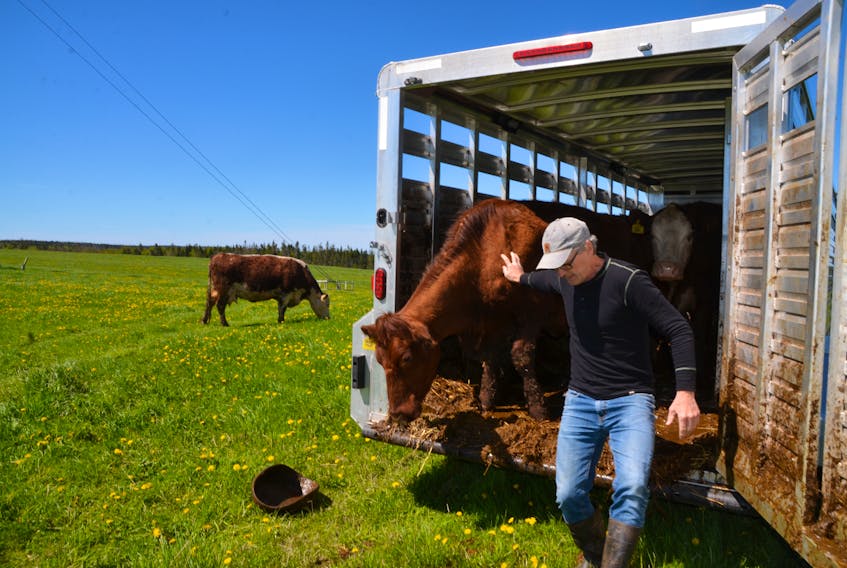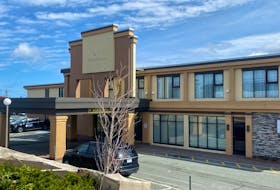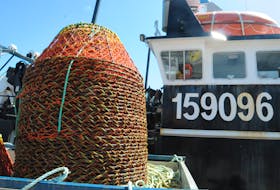It looks like 2020 will be the first year Joe Ebbett doesn't sell any "‘feeders."
Even though that sentence likely doesn’t make sense to the majority of Nova Scotians because they don’t raise cattle, it is significant.
"Feeders" are young cattle.
For each of his previous 20 years running Ebbett's Meadow Brook Farm in Belfron, near Tatamagouche, Ebbett sold his feeders each summer to be fattened up out of province.
That’s how the vast majority of Nova Scotia’s cattle farms, known as cow-calf farms, operate.
The animals get fattened on farms in Ontario, Quebec and Prince Edward Island and then go off to a federally inspected slaughterhouse.
Pre-pandemic, 96 per cent of the beef Nova Scotians bought came from outside the province.
Then the toilet paper disappeared from the shelves in March and people got worried the same thing might happen to meat.
“I can’t get over the sides that went out of here,” Ebbett said.
“That was something people did years ago when I first got started.”
A side of beef is just that – half a cow.
It was quite common a generation ago for rural Nova Scotians to buy half a cow each fall.
“No, you wouldn’t just give them half a cow to put in their freezer, like a 300-pound hunk of meat,” Ebbett corrected a confused line of questioning from the writer of this story.
“They would get all the cuts that would come off that side of meat, packaged.”
It wasn’t just Ebbett, who keeps about 200 head of cattle along with 1,000 free-range chickens and about 800 turkeys, who noticed people showing up at his door to buy meat.
Meat cutters and farms across the province were swamped with orders.
“I guess people thought the world was going to end,” said Wayne Oulton.
The operator of two abattoirs, one for red meat and another for poultry, in Martock usually slaughters and processes five cows a week.
To keep up with the demand in the pandemic’s early days, they quickly killed and processed 60 cows.
Panic buying isn’t news because it doesn’t harbour changing the lopsided ratio of what we grow versus what we import.
The bigger question has been whether our farms and meat cutters can keep some of the new customers when people aren’t as afraid to go to the grocery store.
Buying has slacked off as customers returned to the chain stores, which rely largely on meat killed at federally inspected facilities out of province, as opposed to provincially inspected ones like Oulton’s and Ebbett’s.
Oulton’s Meats and Martock Glen Agri-Zoo are selling via curbside pickup so as not to endanger the health of their employees in the abattoirs.
“We saw a lot of new faces when (COVID-19) started and I think we have retained some of them,” said Oulton.
The hope expressed by farmers during the early rush was always that if they could manage to hold onto a portion of the new customers, it could make a big difference.
“We’re still moving way more meat,” said Ebbett.
“I just think people made up their mind that they wanted to support local.”
Hence his plan to finish his cattle this year instead of selling them off to an out-of-province feedlot.
“I’d rather keep them then sell them as feeders,” said Ebbett.
“We have some of the best grassland in the country if you ask me.And it’s a few more dollars in your pocket.”









